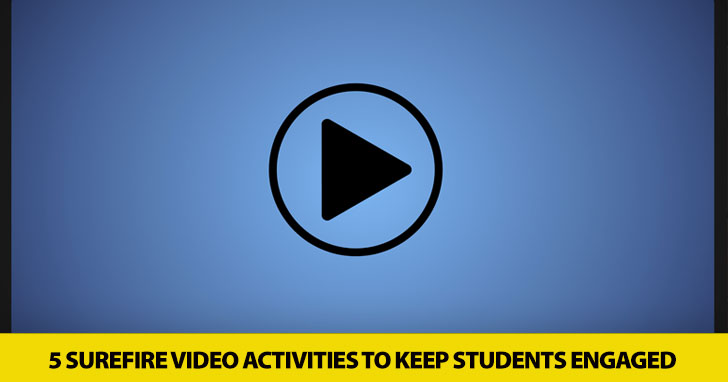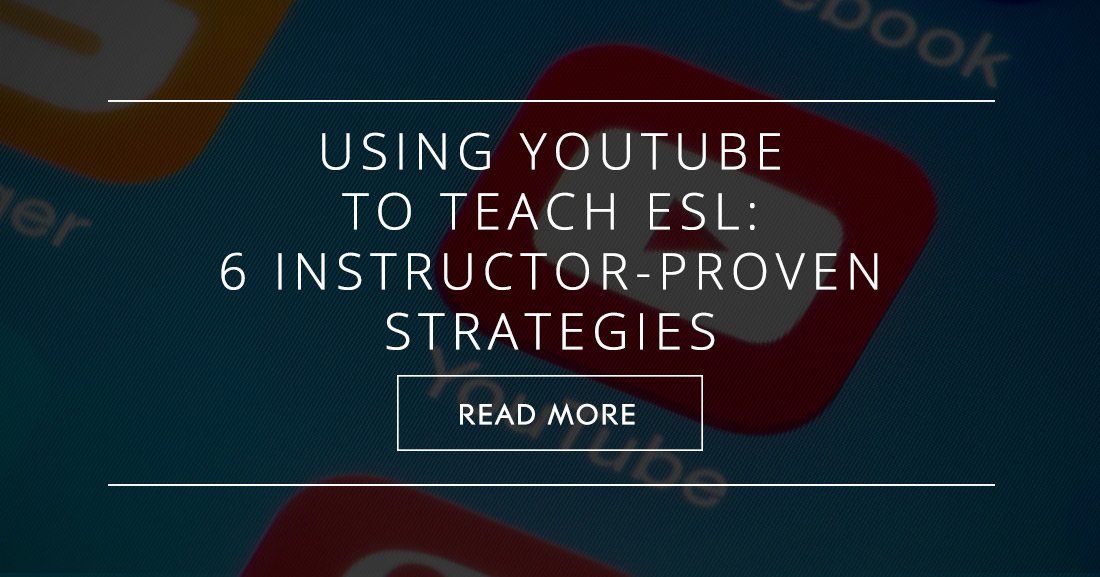They Won’t Be Able to Look Away: 5 Surefire Video Activities to Keep Students Engaged


One of the easiest and most flexible technology tools for ESL teachers and their students are the videos found on YouTube. The website offers a seemingly limitless source of videos and many more than one teacher could ever use. If you are looking for some interesting ways to use YouTube as part of your lesson plans, here are six great ideas for putting YouTube videos to work for you in class.
Do you make a point of including realia in your classroom? The phrase is a fancy educational word which means materials not made for second language learners, and that’s exactly what you will find on YouTube. Since anyone can upload their own videos, you can find great examples of naturally spoken English from all over the world. Use it in class to expose your students to different accents and speech patterns as well as vocabulary used in different English speaking areas of the world.
Perhaps because I am a writer, I am always looking for inspiration in the world around me. And even though your ESL students may not consider themselves authors, they need inspiration too. YouTube can be that for them. Do you want them to write a skit? Look at some examples on YouTube. Are you giving them a writing assignment on a particular topic? Let them watch a video on the subject to get them thinking about what they will write. Do you want your students to film their own video? Have them use an already published piece as an example to follow. There are tons of ways students can find inspiration from the videos available on YouTube. It’s up to you to seek out the right ones and hit play in class.
Your listening text may have come with sound files for practicing, but those sound bites are most likely written and recorded with ESL students in mind. Challenge the members of your class with a listening assignment a little more like what they will encounter in the real world. You don’t have to let them view the video, either. Just play the audio for them with the screen pointed toward you and you can substitute for just about any prerecorded selection that came with your text. Then do some activities to test how well your students understood what they just heard.
Since YouTube videos can be so subject specific, they are a great source of vocabulary, particularly words your students might not otherwise encounter. To introduce your students to new vocabulary on a YouTube video, start by giving them a transcript of the video with the key vocabulary words replaced by blanks. Play the video for students and ask them to listen for the missing words. You may want to play the video two or three times to give students a good chance to hear the words. Then give students a list of the words which complete the blanks arranged in random order. Once students figure out which words go in which blanks, give them definitions of the words also in random order and ask them to match each new word to its definition. Finish the exercise by going over which words belong in which blanks and their definition. If you like, view the video one more time so students can be sure they are hearing things right.
If you use content areas to teach language concepts, you’ll find YouTube is a great source for introductory material for your students. At the start of a new unit, play a video on your new topic for your students to get them thinking about the subject at hand. For example, for a unit on sports you might play a clip of American football which many ESL students have never seen before. Then take some time either individually or as a class to fill out a K/W/L chart on the topic you introduced. You students will be in a great place to remember all that they already know about the subject and to link new knowledge (both content and language) to the information they already have stored in their brains.
If you use a flipped classroom model or you are looking to implement it for one or more units in your class, make sure you make the most of the resources on YouTube. Choose instructional material about your topic from the many videos available online. Then assign students to watch those videos at home. When you come to class the next day, you can use your time putting that knowledge to use rather than spending it on instruction.
One additional benefit of YouTube is that it is free. Not only can you watch unlimited videos at no cost to you. You can also upload any of your own videos when you create free account. Consider recording your lectures in class so students can watch them again at home if they need a refresher. Have students film their own videos and post them for all the world to see. Create playlists for your classes that they can watch on their own time for either pleasure or instruction. The possibilities really are limitless. It just takes a little effort from you to make YouTube a part of class, but everyone within your classroom walls will benefit when you do.